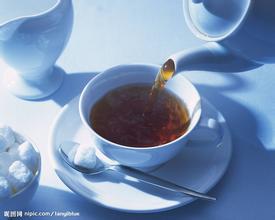Flavor description of coffee beans in Fenghuang Manor, Costa Rica
Flavor description of coffee beans in Fenghuang Manor, Costa Rica
There are no obvious ups and downs or changes in weight. Due to the loss of consistency, the overall taste is lighter and more burden-free. In terms of flavor, it is a little more comprehensive and uniform. The taste shift at different temperatures is not as obvious as that of Day 2, and basically all the flavors are highly integrated. But it is worth mentioning that the sour feeling of this rush is longer than the first two cups, the first two DAY are almost the first two or three mouthfuls are the performance of plum acid, and then turn sweet. In this rush, the sour feeling of plums was almost maintained until the end of drinking, and basically did not weaken or increase significantly with the decrease of temperature. When I first drank it, I thought it was a little strange. Now when I look back and analyze the reason, it is estimated that the static replenishment of water in the latter section did not extract the sweet feeling, which led to this obvious difference.
After peeling, the peel and pulp of the coffee fruit are recovered as feed for livestock, or converted into organic fertilizer, as well as coffee bean dryer fuel. It can be said that in every process of coffee production, Costa Rica complies with the requirements of maintaining the natural environment.
Among the many excellent producing areas in Costa Rica, there is a famous producing area that stands out-Tarazu (Tarrazu), also known as Tarasu. Tarazhu is very famous in the world of boutique coffee and is one of the major coffee producing areas in the world. In the 2014 COE competition, of the 23 beans on the list, 17 came from Tarasu. Tarasu is located in the fertile volcanic region of Central America, which has a humid climate and fertile volcanic soil, abundant rainfall throughout the year, high altitude, and dense forest natural shade, providing a unique growth environment for coffee growth. Pesticides or artificial fertilizers are not used in the planting process. Nearly 95% of the coffee beans produced in Tarazhu Alpine are very hard beans (SHB), which generally grow above 1500 meters above sea level.
At present, the Tarazhu Cooperative has 26 member estates. Among them, Raminita Manor, which is one of the most famous coffee farms in Tarazu. La Minita produces about 1 million pounds of coffee beans a year, and after the entire estate produces coffee beans that are carefully selected to remove defects, only 15 per cent of the coffee beans can bear the mark of the Laminita estate, while the rest enter the coffee market. But the prices of these coffees entering the market are still higher than those of other beans produced in Central America. Raminita's strict management of all aspects of coffee production has established a world-class reputation. Costa Rica, a world-famous coffee estate, has many excellent producing areas, while the high-quality producing areas of Costa Rica have a common understanding of quality. that is to use mature coffee fruits to ensure the production of high-quality coffee.
Generally speaking, a large amount of water is used in the post-processing of picked coffee fruit, but the advanced production equipment in Costa Rica saves the use of water resources to the greatest extent, and a circulating filter is used to treat the waste water from washing coffee beans. let the waste water be purified into clean water to prevent pollution of the local soil environment.

Important Notice :
前街咖啡 FrontStreet Coffee has moved to new addredd:
FrontStreet Coffee Address: 315,Donghua East Road,GuangZhou
Tel:020 38364473
- Prev

Introduction to the characteristics of artificial Kopi Luwak flavor description of Cambodian civet coffee
Cambodian civets Coffee Brand artificial Kopi Luwak Flavor description: introduction to the taste and characteristics of the variety. In fact, what civets like to eat is only the flesh of coffee. When the fruit passes through the digestive system of civets, only the pulp on the outside of the fruit is digested, while the core coffee beans are discharged intact, and the coffee beans fermented in the stomach have a special taste. When the coffee beans are
- Next

Costa Rica Tara Beads Coffee Bean Flavor Description Grind Scale Variety Taste Treatment Washing Introduction
Costa Rica Tara Beads Coffee Bean Flavor Description Grind Scale Variety Taste Treatment Method Washing Introduction Flavor Description: Hami melon, durian, cranberry, rich grape juice, red wine, orange, pineapple, etc. Tropical intense fruit bomb, rich jujube tea Yellow Honey: about 40% pectin is removed; drying method requires the most direct heat absorption, receiving the most light
Related
- Detailed explanation of Jadeite planting Land in Panamanian Jadeite Manor introduction to the grading system of Jadeite competitive bidding, Red bid, Green bid and Rose Summer
- Story of Coffee planting in Brenka region of Costa Rica Stonehenge Manor anaerobic heavy honey treatment of flavor mouth
- What's on the barrel of Blue Mountain Coffee beans?
- Can American coffee also pull flowers? How to use hot American style to pull out a good-looking pattern?
- Can you make a cold extract with coffee beans? What is the right proportion for cold-extracted coffee formula?
- Indonesian PWN Gold Mandrine Coffee Origin Features Flavor How to Chong? Mandolin coffee is American.
- A brief introduction to the flavor characteristics of Brazilian yellow bourbon coffee beans
- What is the effect of different water quality on the flavor of cold-extracted coffee? What kind of water is best for brewing coffee?
- Why do you think of Rose Summer whenever you mention Panamanian coffee?
- Introduction to the characteristics of authentic blue mountain coffee bean producing areas? What is the CIB Coffee Authority in Jamaica?

